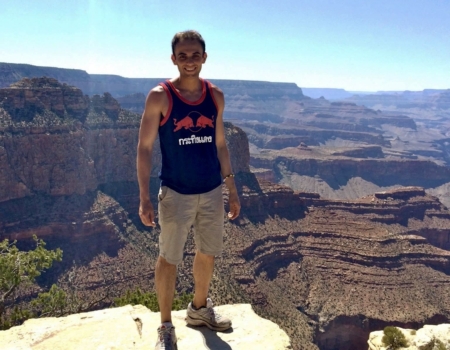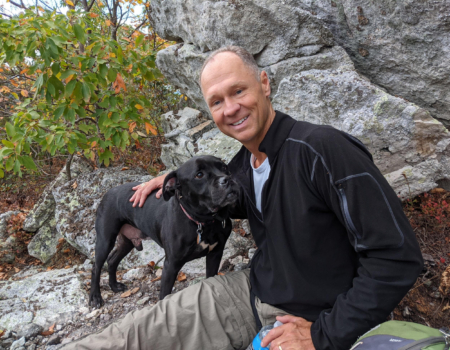There is no right or wrong when it comes to improving your fitness

As a former health and physical education teacher, I taught children who innately loved to move. I miss watching them giggle – running, skipping and “playing” seemingly without a care in the world. The joy they got from a simple game of tag was fascinating to me.
So, what happened to the “play” when we became an adult? Why did the “play” go away? Unfortunately, the adult version of play has been replaced with sedentary activities like binge watching TV, scrolling through our phones, and participating in Zoom happy hours or gatherings.
People ask me all the time – as a busy mom, how do you make time for physical activity? When I tell them about my morning routine, which starts at 5:00 a.m. before my husband and daughter wake up, they look at me like I’m crazy. I explain to them that this is my time – to think, to move and to “play”. Whether I’m going for a morning run, heading to the gym for a class or using my home equipment to lift weights, it happens every day. I don’t miss because I don’t want to miss. I love it. It is peaceful, rejuvenating and it is all mine.
When we cross over from childhood to adulthood our lives change. We take on increased responsibilities i.e., family, work etc. which inevitably come with stress. We have less downtime. This is normal but it doesn’t mean we should stop playing.
Now, as a personal trainer and health coach I work with adults. They want to know the “best” form of exercise, the “best” time to do it and for how long. There is no “best” form of exercise. The “best” form of exercise is the one that you’ll do. Don’t overthink – just do!
The truth is many of us have lost our “play” and we need to get it back. To find it we must discover the type of movement that makes us happy and brings us the same joy we experienced when we were kids. Walking, dancing, jumping rope, hiking, any type of activity where we’re moving the body and “playing” counts.
Current CDC physical activity guidelines recommend that adults participate in at least 150 minutes of moderate-intensity equivalent aerobic physical activity weekly to achieve substantial health benefits.
In a peer reviewed study on the percentage of deaths associated with inadequate physical activity in the United States (2018) researchers concluded that a statistically significant portion of deaths were attributed to inadequate levels of physical activity.
Furthermore, in a longitudinal study conducted by researchers from the Journal of the American College of Cardiology (2019) showed an increase in all-cause and cardiovascular disease (CVD) mortality rates for individuals who spent more than 6 hours per day sitting combined with little to no physical activity. The study included 267,000 men and women ages 45+.
I mention these studies, not to scare anyone but instead to motivate and encourage a more active lifestyle. Regular exercise has had such a positive impact on both my physical and emotional health – I simply want to inspire my clients NOT to overthink exercise and just start moving. Remember, progress not perfection.
Here are a few suggestions for bringing back the “play” in your life.
- Make a list of physical activity you do or have enjoyed in the past.
- Find a convenient place to do physical activity.
- Carve out a consistent time in your day to insert physical activity.
- Don’t stress over the length of time you do the physical activity.
- Hold yourself accountable. It is your commitment to yourself.
- Don’t blame people, places, or things for not getting it done.
- When you’re engaged in the activity be present, don’t think about the “to do” list in your head.
- If it isn’t working, go back to your list. Try something else.
- Think of exercise as your PLAY time. Not a chore to be checked off.
- If you forgot what play looks like – watch children. They are experts.




